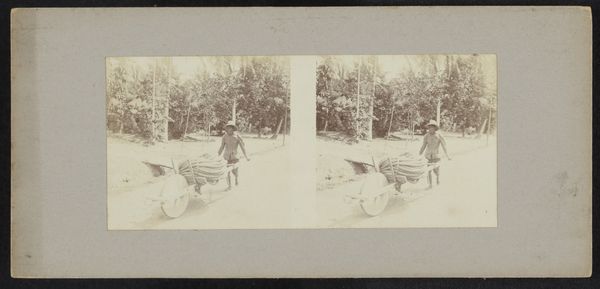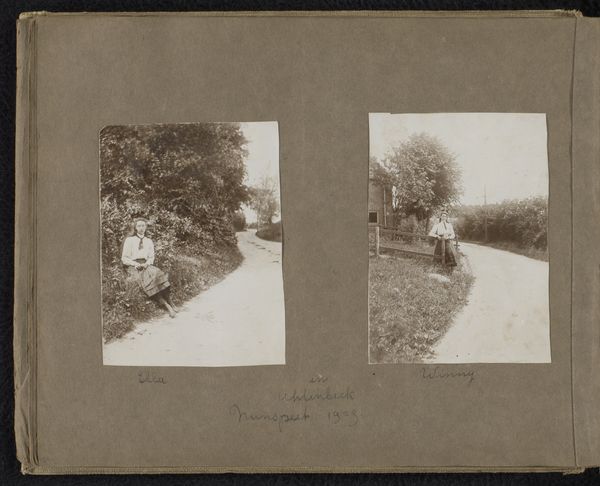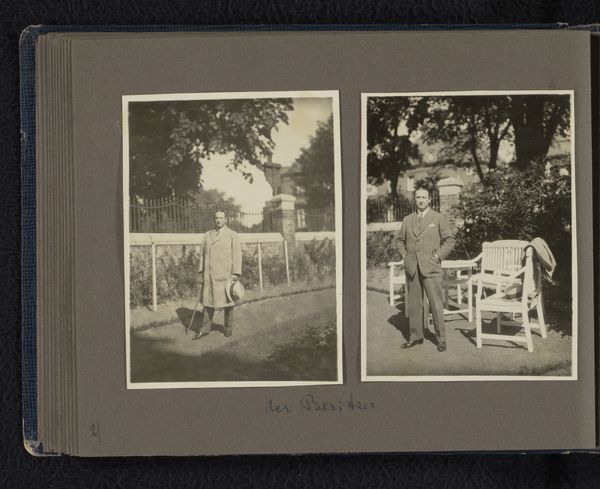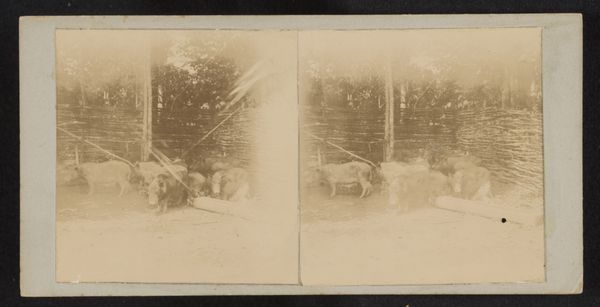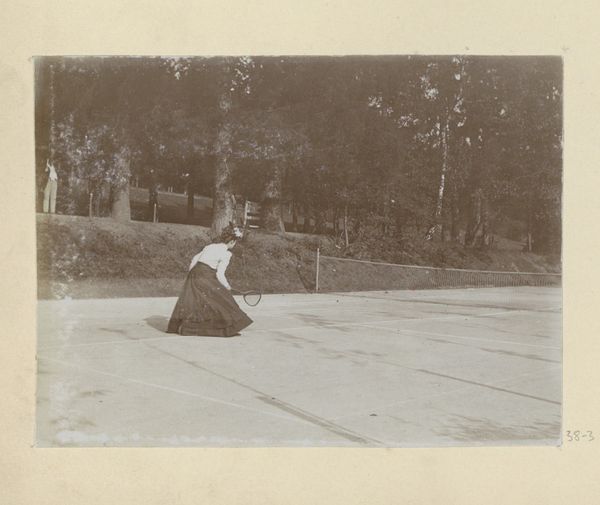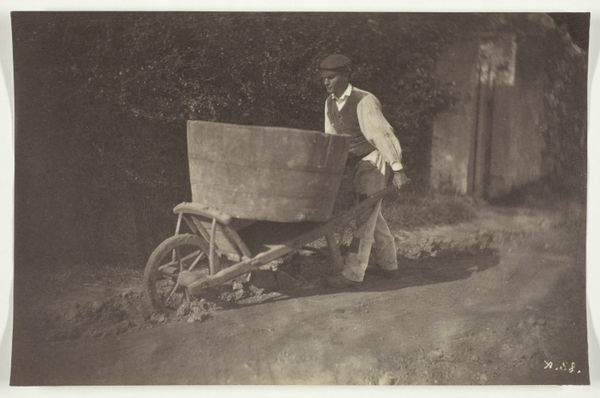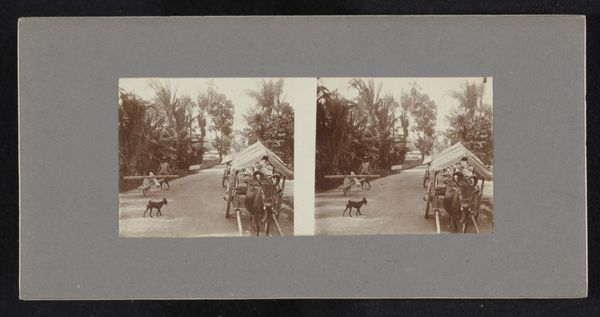
photography
#
portrait
#
street-photography
#
photography
#
realism
Dimensions: height 53 mm, width 56 mm, height 88 mm, width 178 mm
Copyright: Rijks Museum: Open Domain
Editor: This photograph, “Kruier” by Robert Julius Boers, taken between 1900 and 1922, offers a slice of life captured in sepia tones. There’s something quite stark about the composition; the solitary figure and the wheelbarrow, almost centered, dominate the scene. How do you interpret the formal qualities of this image? Curator: The formal properties yield much. The monochromatic palette and the sharp contrast between the subject and background enhance the photo's stark realism. Observe how the artist strategically uses line: the lines of the wheelbarrow and the road itself converge, guiding the viewer's eye, creating a focal point that emphasizes the subject's labor. Consider the balance achieved by placing the figure slightly off-center; this choice subtly infuses the composition with dynamism, preventing it from becoming static. Do you notice how the limited depth of field compresses the space? Editor: Yes, I see that now! It almost flattens the scene, drawing attention to the textures within the photograph itself - the rough road, the wooden wheelbarrow. So, beyond realism, what's communicated through this formal arrangement? Curator: The textural contrasts underscore the dignity of labor. The repeated geometric shapes within the frame contribute a structured yet unyielding quality that might reflect the social climate or artistic conventions of the time. We see also, a sense of unadorned truth conveyed by its minimalist style, redirecting focus to the act represented instead of distracting from its inherent significance. Editor: That makes so much sense. Seeing it now from a structural point of view enriches the story this photograph tells, even in its seeming simplicity. Thanks for illuminating this work. Curator: My pleasure. Reflecting on the artwork’s formal properties can indeed lead us to more nuanced understandings.
Comments
No comments
Be the first to comment and join the conversation on the ultimate creative platform.
